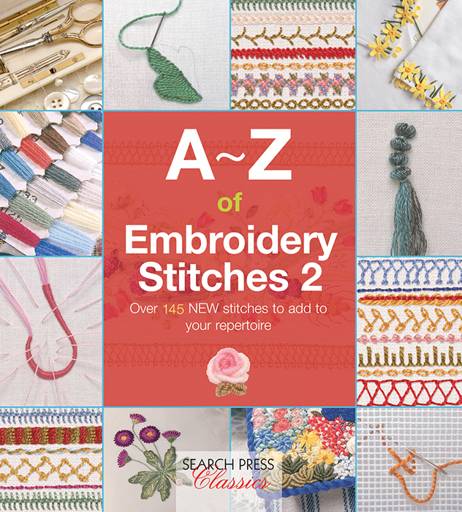Threads 101
20TH JULY 2018 - ASU #147
The origins of the first embroidery threads are unknown but it is not unreasonable to assume that the first examples of embroidery resulted from man discovering that the same stitches that were used to hold hides and cloth together for clothing, could be used to create decorative patterns.

We have come a long way from the days of crude bone needles and coarse threads, and the glorious array of embroidery threads that are now available can be quite overwhelming. While it is easy to become seduced by glowing colours and sparkling surfaces, it is always an advantage to have some understanding of the materials that you are using – those characteristics that make each thread type unique and some more suited to particular tasks than others.

This will help you to avoid inappropriate choices and relieve the frustration of trying to stitch with an unsuitable thread.
So, what are the characteristics that make threads different from one another?
Thread Twist – ‘S’ twist or ‘Z’ twist?
Most embroidery threads are created by spinning short fibres together then combining several fine threads, or plies, to create a strong, durable thread. Exceptions to this are threads like silk filament and most metallic threads.
As a general rule, the longer the fibres, the stronger the thread – this is why long staple cottons and wools produce superior results to short staple ones.

The plies are twisted together in a clockwise or counter clockwise direction, resulting in a thread with either an ‘S’ or ‘Z’ twist. So how can you tell the difference? Take a single strand of thread and look carefully at the way the plies are held together. If the line of the twist goes from upper left to lower right it is an ‘S’ twist, like the centre of an S (fig 1). If it goes from upper right to lower left it is a ‘Z’ twist, like the centre of a Z (fig 2).
Regardless of which way you hold the thread, the twist will be the same. Divisible threads will have each strand created by twisting in one direction then the bundle of strands will be held together by twisting in the opposite direction. For example, each strand of stranded cotton is created with an ‘S’ twist but the group of six threads are held together in a ‘Z’ twist (fig 3).
The majority of threads – cotton, silk, linen and wool – are ‘S’ twist but rayon and some silk threads tend to be ‘Z’ twist. So why is this important and how does this make a difference when you stitch?
For many stitches and techniques, the direction of the thread twist has little perceptible impact but there are some stitches where it becomes very obvious. This difference is made much more apparent when working with a single strand of thread.
Stem and Outline Stitch
For example, take a single ‘S’ twist thread (tapestry wool or cotton pearl are ideal) and work a line of stem stitch from left to right.

Then, take another length of thread and work a line of outline stitch from left to right. Now compare the two rows of stitching – the outline stitch is very smooth, and it is difficult to identify each stitch but the stem stitch is quite textured and each stitch is clearly obvious. This occurs because the thread untwists as you work the outline stitch but overtwists as you work the stem stitch. Now, if you were to take a ‘Z’ twist thread and do exactly the same thing, the stem stitch line would be smooth, and the outline would be textured.
Bullion Knots
Again, take a single ‘S’ twist thread and work a bullion knot, wrapping the thread in a clockwise direction around the needle. Then, work a second knot, this time wrapping the thread in a counter clockwise direction.
The first knot will be very smooth as the thread plies have been untwisted as you wrap around the needle and they are lying next to one another.
 **LEFT: ‘S’ twist thread wrapped clockwise
**LEFT: ‘S’ twist thread wrapped clockwise
RIGHT: ‘S’ twist thread wrapped counter clockwise**
The second knot will be textured with each thread wrap quite discernible as the plies are more tightly twisted together. If you were to repeat this exercise with a ‘Z’ twist thread, the results would be the opposite – the knot that was wrapped clockwise around the needle will be textured, the one wrapped counter clockwise will be smooth.
Interested in Learning More?
The above article is an excerpt from the book A-Z of Embroidery Stitches 2 published by Search Press, which features a ‘Getting Started’ guide to needlework including needle charts, introduction to threads, detailed information about hoops plus step-by-step guides to over 145 different stitches. Printed copies are available to purchase from our website.

